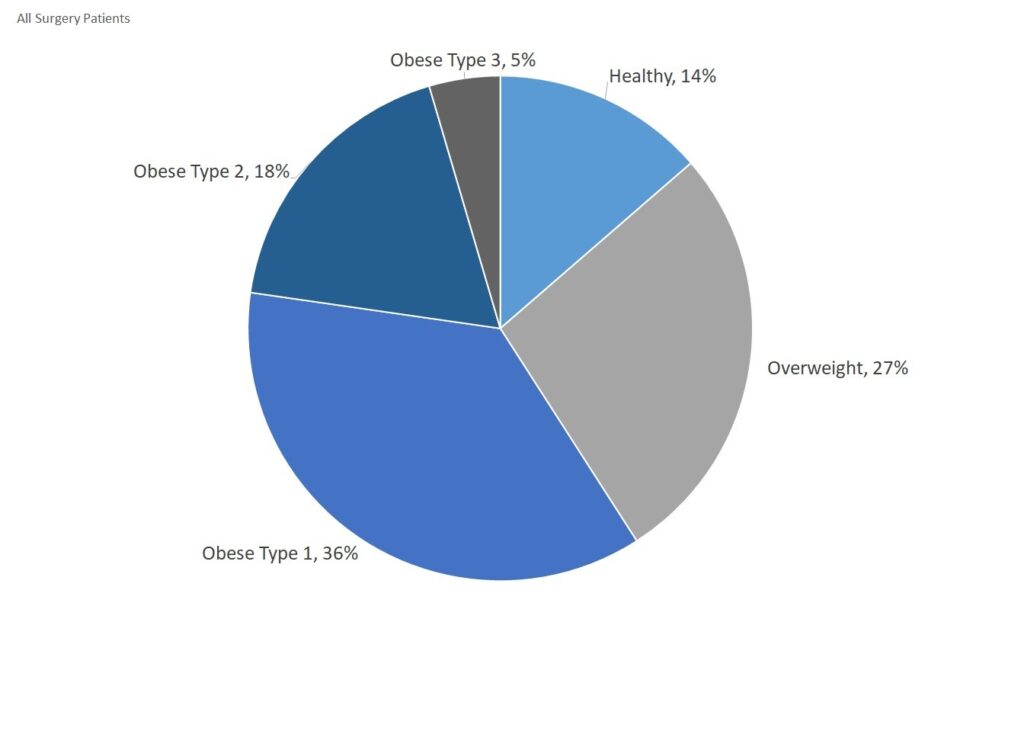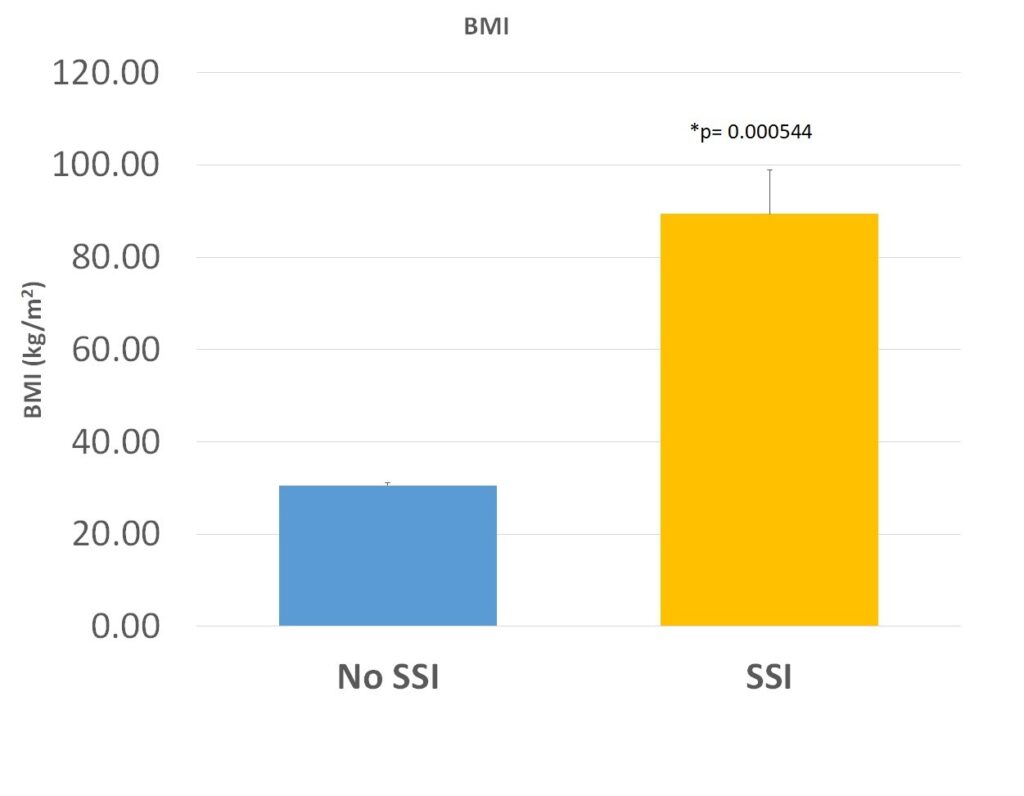1Hawes J, 1Hernandez C, 1Gowen L, 2Wagner R
1Texas College of Osteopathic Medicine, Fort Worth, TX, United States; 2John Peter Smith Hospital, Fort Worth, Texas, United States
Introduction
Obesity has been associated with post-surgical complications. Surgical site infection (SSI) following joint replacement is a feared complication, requiring reoperation and may lead to persistent infection. Increased BMI is a risk factor for infection, but there is conflicting data regarding whether the elevated risk is related to the distribution of fat relative to the surgical site or systemic factors. Studies have investigated site-specific fat distribution and SSI following total knee arthroplasty (TKA) using radiographs, but the radiographs for THA patients frequently cut off the fat shadow at the edge of the radiograph. Our study aims to evaluate the relationship between site-specific fat distribution using physical measurements and wound healing problems and infection following total hip arthroplasty (THA).
Methods
Prospective data collection of intraoperative measured surgical-site fat depth. Fat depth was measured intraoperatively from the skin surface to the center of the greater trochanter. Ratio between this distance and the size of the lateral trochanter. Chart review of surgeries (n=98) to collect information on patient history, demographics, and various risk factors.
Results
Increased infection risk is linked to the distribution of localized subcutaneous fat. Nonetheless, when predicting Surgical Site Infections (SSI), patient BMI proves to be a more reliable indicator. The average distribution of Subcutaneous fat measured around the hip in the total number of procedures (n=97), was 3.1 cm. Of the procedures performed, the average fat distribution of an underweight/normal patient (n=12) was 2.3cm, 2.6 for those overweight (n=24), 3.2cm for obese class I (n=32), 3.9cm for obese class II (n=16), and 4.6% for obese class III (n=4). Of all the patients, 37% had a subcutaneous fat thickness ≥3cm. With a p-value of 0.000544, this dataset demonstrates that BMI shows a statistically significant correlation between elevated BMI. Whereas the localized fat distribution has a p-value of 0.058309. This indicates that localized fat distribution shows a statistical trend. BMI was predictive of increased risk for surgical Site Infection (SSI) in THA. Increased total fat distribution was also associated with an increased risk.
Conclusion
BMI proved to be an effective predictor in evaluating the probability of a Surgical Site Infection (SSI), with a higher BMI indicating a greater SSI risk compared to local fat distribution. Additionally, localized fat distribution also exhibits a statistical trend. However, the small number of positive cases (n=2) may limit the statistical significance of this association.





